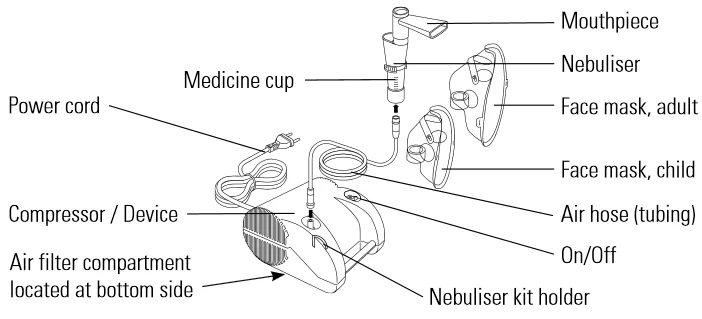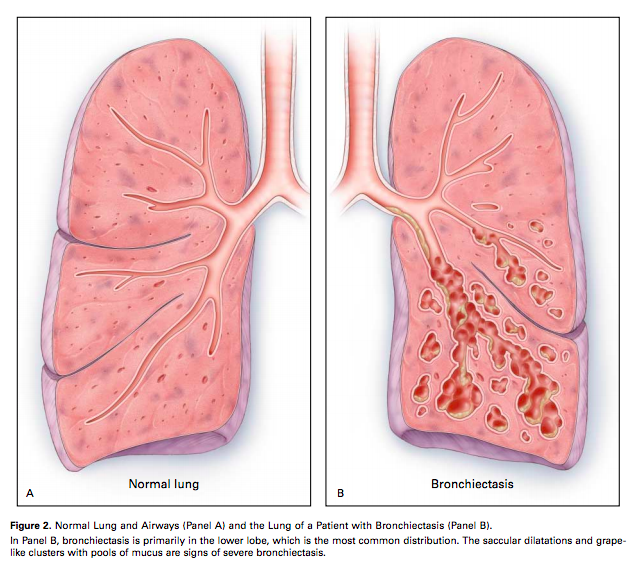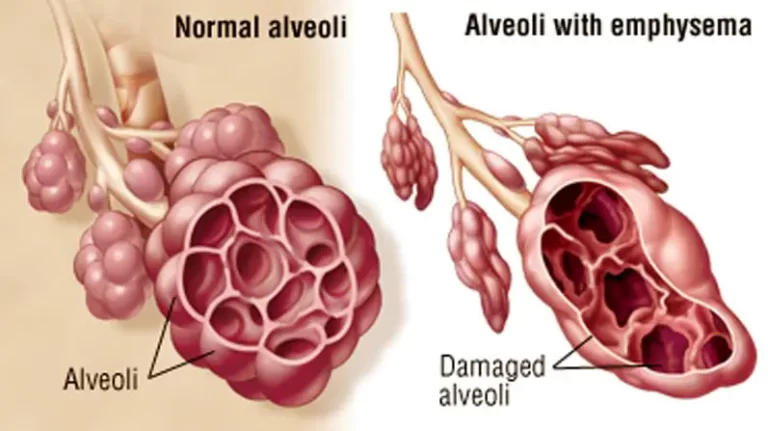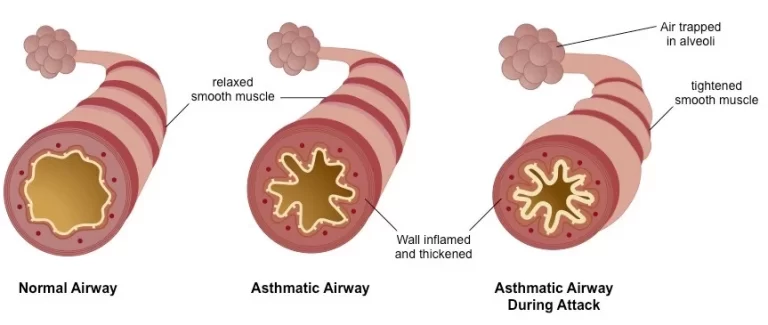Nebulizer: Types, Indication, Contraindication, Procedure
What is a Nebulizer?
A nebulizer is a medical device that converts liquid medication into a fine mist or aerosol, which can then be inhaled directly into the lungs through a mouthpiece or mask. This method of delivery is particularly effective for patients with respiratory conditions such as asthma, chronic obstructive pulmonary disease (COPD), and other lung diseases.
DEFINITION
Nebulization is the process of medication administration via inhalation. It utilizes a nebulizer that transports medications to the lungs by means of mist inhalation.
Types of Nebulizer
There is a huge market for different types of nebulizers and each of them has some unique features although they all function in a similar way. Here are the two basic types of nebulizers available in the market:
STATIONARY NEBULISER – these are the nebulizers that are sturdy, rest on top of the table and they can provide durability as most of them come with a longer warranty period. They are cheaper than mobile nebulizers and serve as a good aid for usage for children or elderly patients. Stationery nebulizers are mostly for indoor use only and are seldom used outdoors.
MOBILE NEBULISER – these nebulizers provide the most mobility as they can be hand-held and carried with the patient wherever they go. They have alternative power sources like batteries or auto adapters which enable them with usage in areas where there is no or limited access to AC power. Since they are mobile in nature, these nebulizers are lighter than the stationery ones and also smaller in size.
ULTRASONIC NEBULISER – Ultrasonic nebulizers deliver the medicine through high-frequency vibrations in order to change the liquid medication into a mist to inhale and feel relaxed.
The fine mist is inhaled through an attached mask or the mouthpiece as the ultrasonic nebulizers doesn’t condense air, they function quietly and are small in size to fit into any container to begin the function. Being portable, compact, and battery-operated, they work fast when compared to other nebulizers and utilize ultrasonic waves to aerosolize the liquid medication.
JET NEBULISER – A jet nebulizer is a machine that changes the prescribed liquid medicine into a fine mist to let the child or the patient breathe in through the mouthpiece or the face mask. It delivers the medicine directly to the inhaler’s lungs, making it easy to use.
These are less expensive and are usually in the form of a plastic cup that holds the medication and allows the air to pass through the tube with the help of the compressor. Basically, jet nebulizers require electricity, frequently to function which is not advised safe to carry or depend on during travel. It produces a loud sound and offers a range of particle sizes to change a liquid into a mist.
MESH NEBULISER – A Mesh Nebulizer is considered as the fastest working device and is more expensive when compared to the other nebulizers. It operates on a battery power supply and is quiet, efficient, and well-suited to aerosolize solutions. It generates the mono-disperse aerosol particles of 4.5 to 5µm. It utilizes a vibrating membrane to generate the aerosol mist from the medication.
Available in a compact and portable body, it is perfect to carry while traveling and use in case of need. Besides this, a Mesh nebulizer requires proper care, careful handling, and intense cleaning as the membrane is more prone to get blocked and requires replacement many times a year for the proper function of the inhalation process.
INDICATION
Nebulization therapy is used to deliver medications along the respiratory tract and is indicated for various respiratory problems and diseases such as:
•Broncho-spasms
•chest tightness
•Excessive and thick mucus secretions
•Respiratory congestions
•Pneumonia, Cystic fibrosis
CONTRAINDICATIONS
In some cases, nebulization is restricted or avoided due to possible untoward results or rather decreased effectiveness such as:
•Patients with unstable and increased blood pressure
•Individuals with cardiac irritability (may result in dysrhythmias)
•Persons with increased pulses
•Unconscious patients (inhalation may be done via mask but the therapeutic effect may be significantly low
EQUIPMENT
•Nebulizer and nebulizer connecting tubes
•Compressor oxygen tank
•Mouthpies, Respiratory medication to be administered
•Normal saline solution
PROCEDURE
- Position the patient appropriately, allowing optimal ventilation.
2. Assess and record breath sounds, respiratory status, pulse rate, and other significant respiratory functions.
3. Teach the patient the proper way of inhalation:
Slow inhalation through the mouth via the mouthpiece
Short pause after the inspiration
Slow and complete exhalation
Some resting breaths before another deep inhalation.
4. Prepare equipment at hand
5. Check doctor’s orders for the medication, and prepare thereafter
6. Place the medication in the nebulizer while adding the amount of saline solution ordered
7. Attach the nebulizer to the compressed gas source
8. Attach the connecting tubes and mouthpiece to the nebulizer
9. Turn the machine on (notice the mist produced by the nebulizer)
10. Offer the nebulizer to the patient, and offer assistance until he is able to perform proper inhalation (if unable to hold the nebulizer [pediatric/geriatric/special cases], replace the mouthpiece with a mask.
COMPLICATIONS
Possible effects and reactions after nebulization therapy are as follows:
•Palpitations
•Tremors
•Tachycardia
•Headache
•Nausea
•Broncho-spasms (too mu
NEBULISER ventilation may result in or exacerbate Broncho-spasms)
Nebulizer VS Inhaler
Nebulizers and inhalers both deliver medication into your lungs, and each has advantages and disadvantages.
Young children typically find it easier to utilize nebulizers because all they need to do is breathe normally. Medicine delivery takes longer—at least five to ten minutes. Furthermore, even portable nebulizers can be heavy and difficult to transport. However, because they can see and feel the medicine mist, some patients prefer nebulizers.
Compared to nebulizers, inhalers are frequently less expensive and have fewer adverse effects. One can fit in your purse or pocket. Although using an inhaler can be challenging at first, most people get it up quickly. It administers a precise dosage of medicine.
TEACHINGS
As nurses, it is important that we teach the patients the proper way of doing the therapy to facilitate effective results and prevent complications (demonstration is very useful). Emphasize compliance to therapy and report untoward symptoms immediately for apposite intervention.
Auscultatory gap is the temporary disappearance of sounds normally heard over the brachial artery when the cuff pressure is high and the reappearance of the sounds at a lower level.
Provide excellent clues to the physiological functioning of the body.
•Alterations in body flexion are reflected in the body temp, pulse, respiration, and blood pressure.
•These data provide part of the baseline info from which a plan of care is developed.
•Any change from normal is considered to be an indication of the person’s state of health.
How Should My Nebulizer Be Maintained?
To avoid infection, it’s critical to clean and sanitize your asthma nebulizer equipment. Keep it clean in a place free of dust, smoke, and open windows.
Here are some cleaning guidelines for your nebulizer:
Rinse the nebulizer cup well with warm water after each treatment, shake off any remaining water, and allow it to air dry. At the end of each day, wash the mouthpiece, mask, and cup in warm water with a tiny bit of detergent. Give it a thorough rinse, then allow it to air dry. The compressor tube doesn’t require cleaning.
After cleaning your equipment every third day, disinfect it using a disinfectant solution or a vinegar/water combination. Combine ½ cup white vinegar and 1½ cups water to form the vinegar solution. After giving the equipment a 20-minute soak, give it a thorough rinse with a constant stream of water. After removing any extra water, let it air dry on a paper towel. Before putting it in a plastic bag with a zipper, make sure it is completely dry.
Storing
When not in use, place a clean cloth over the compressor. If needed, wipe it with a fresh, moist towel.
When treating or storing, never place the air compressor on the ground.
Keep prescription drugs in a dry, cool area. Certain items must be refrigerated, while others must be kept out of direct sunlight. Examine them frequently. Replace them if they have developed crystals or changed color.
Additional advice
Keep a spare nebulizer mouthpiece, mask, and cup on hand at all times. Request the tube, cup, and mask if your doctor does breathing therapy in his or her office.
When inspecting, cleaning, and replacing the air compressor’s filter, according to the equipment’s instructions.
Conclusion
Nebulizers are devices that easily absorb liquid drugs into the lungs by converting them into a thin mist. They are sometimes used in conjunction with inhalers and are utilized for a number of medical disorders, such as cystic fibrosis, asthma, and COPD.
Nebulizers come in a few different varieties. Whichever kind is most effective for you will be informed by your doctor. They will additionally go through how to maintain it and how to use it.







One Comment